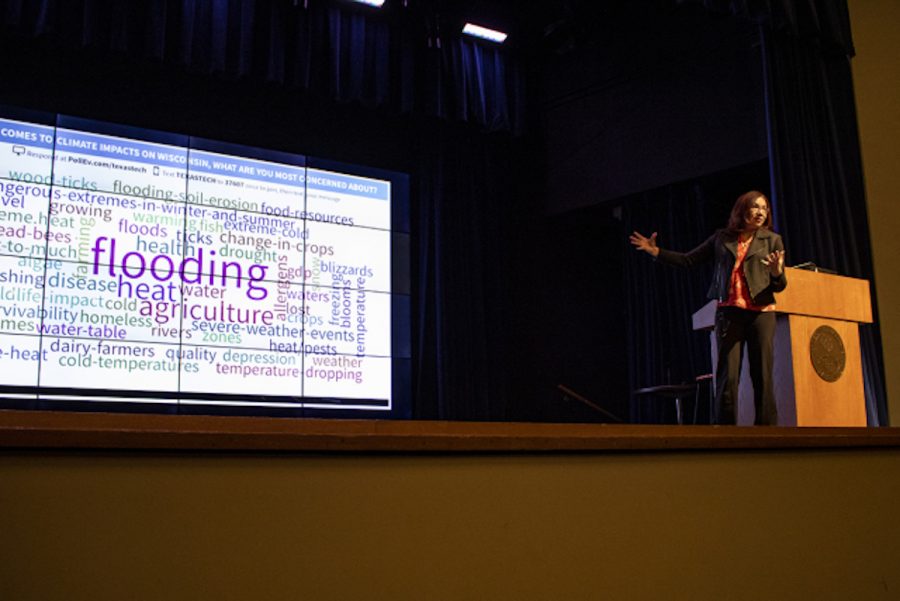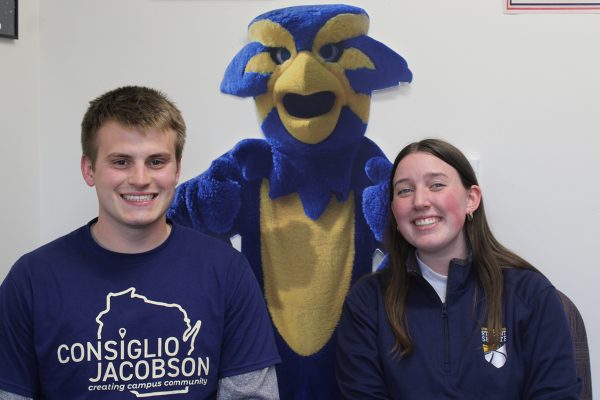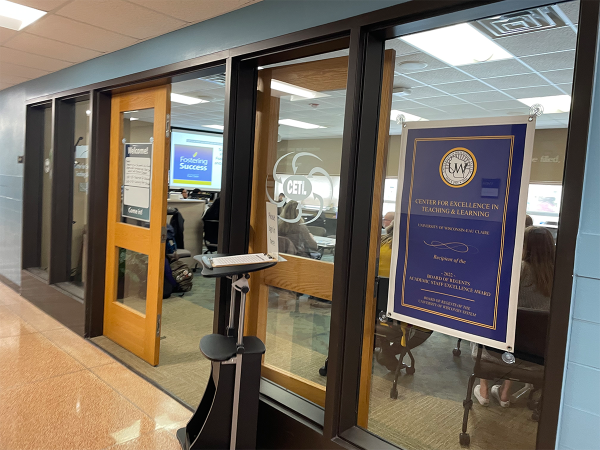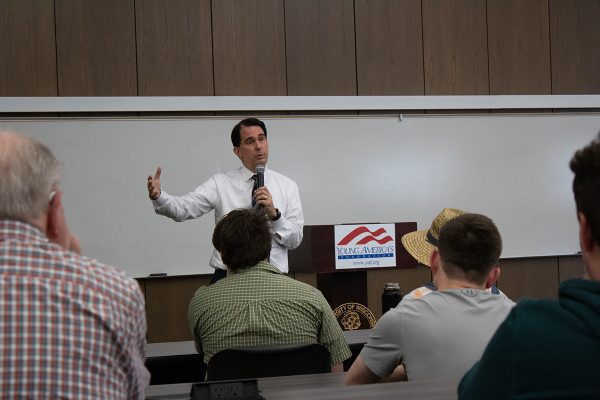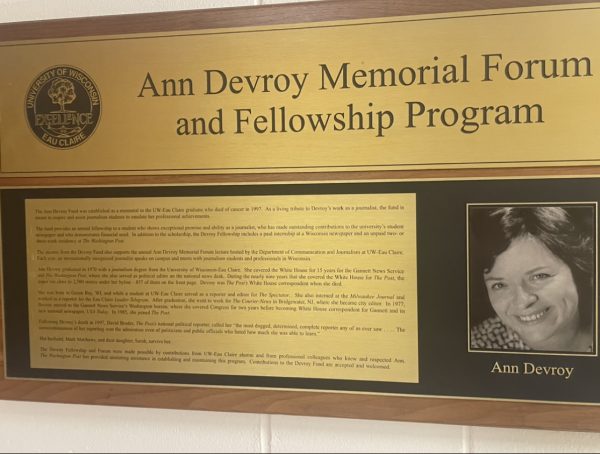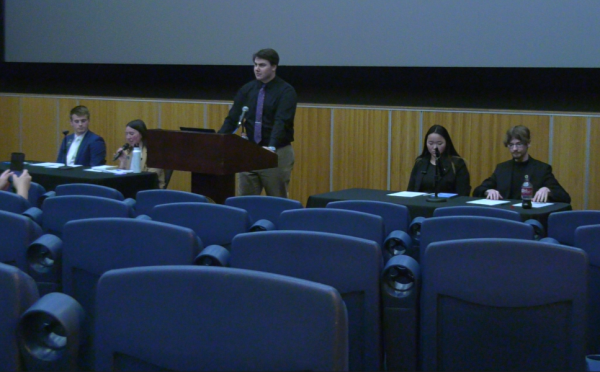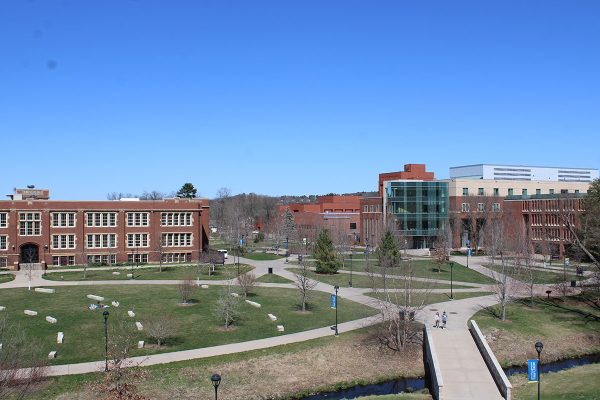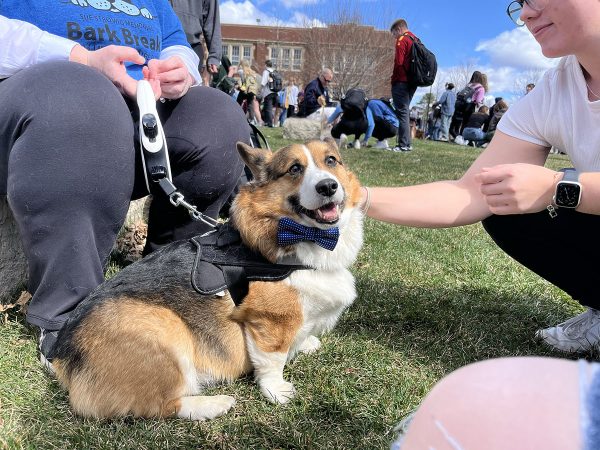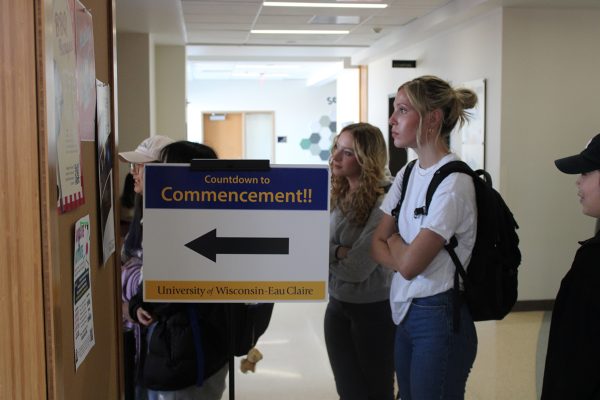Snow can’t stop this climate scientist
Katharine Hayhoe, a climate scientist, presented a speech on climate change during winter-like weather
More stories from Rebecca Mennecke
Photo by Lea Kopke
Katharine Hayhoe, a Canadian, Christian climate scientist, discussed the importance of relating to others and thinking locally when it comes to climate change.
Climate change is a topic that often makes people think of polar bears and melting ice caps in Antarctica, but a noted climate change scientist said people need to think about climate change on a personal, more local, level to solve the issue of global warming.
“Are there polar bears in Wisconsin? No,” Katharine Hayhoe, an atmospheric scientist, said to a crowd of about 250 on Wednesday night. “The biggest symbols of a changing climate are things that have no relevance at all to our lives.”
Hayhoe presented her speech, titled “Forecasting Our Future: A Conversation About Climate Change and Extreme Weather” on April 10 as a part of the 76th annual The Forum series at UW-Eau Claire. The Forum also hosted climate scientist Jonathan Patz earlier this year.
The climate change issue, Hayhoe said, must be approached by finding common ground. Specifically, Hayhoe focused on geographic location.
In Wisconsin, temperatures fluctuate. This is unsurprising, Hayhoe said, considering it was snowing outside as she gave her speech.
There are three reasons why Wisconsin has cold weather: It’s spring in the Midwest, natural variability and climate change, she said.
In February, Wisconsin broke heat records, snow records and cold records all in the same month, Hayhoe said.
“Weather is what our brains are built to remember,” Hayhoe said. “We understand weather. We don’t often understand climate.”
In Wisconsin, there has been a decrease in cold days and an increase in hot days, Hayhoe said. She specifically looked at Milwaukee, where there are currently about eight more days a year with temperatures above 90 degrees. By the 2030s, she said she estimated it will be 16 days. By the end of the century, she said there could be an upwards of 55 days with temperatures over 90 degrees per year.
When it gets warmer, pests don’t die off during the cold temperatures, Hayhoe said. In addition, allergy season lasts two to three weeks longer.
“Climate determines a lot of things we don’t think about,” Hayhoe said.
Climate can affect building codes, how much insulation is needed, which crops are grown where, flood zones and the energy demand, she said.
And, Hayhoe said, the climate can affect things that happen far away.
She discussed how increases in global temperature have caused increased precipitation because of added evaporation, Hayhoe said. She referenced last year when one-third of Bangladesh was underwater.
“The monsoon is normal,” she said. “A third of the country underwater is not normal.”
Despite the scientific evidence, a lot of people deny the science due to the cost of solutions, Hayhoe said.
“If you really and truly have a problem with the basic science of climate change,” Hayhoe said, “then, unfortunately, you’re also going to have to say that refrigerators don’t actually cool the food, stoves don’t actually heat food and airplanes don’t fly because they’re based on the same nonlinear fluid dynamics of radiative transfer that we use in our climate models. It’s the same physics.”
So, one of the ways to solve the climate problem is by finding common ground, Hayhoe said.
“We talk about what matters to us, right?” Hayhoe said. “So if we never talk about it, why would we care? If we don’t care, why would we ever do anything to fix it? Talking about it is very important.”
She said to have meaningful conversations, it’s important to start by discussing common ground. Then, explain why climate change matters because of the values shared, Hayhoe said. The most important thing, she said, is to discuss solutions.
Some of the recommendations Hayhoe gave included: switching to energy-efficient light bulbs, utilizing single-stream recycling stations, eating local, watching food waste, driving electric cars, investing in solar panels and using a drying rack instead of racking up electricity bills by using the dryer.
Elise Peterman, a first-year biology student said climate change is something she feels strongly about.
“I’ve always leaned to the side that climate change is happening, and, after this presentation, I know more of the facts,” Peterman said.
She said she liked how Hayhoe discussed how the largest issue is finding a solution to climate change.
Individuals must have hope about finding a solution to global warming, Hayhoe said.
“I find hope in people every single day,” Hayhoe said.
Mennecke can be reached at [email protected].
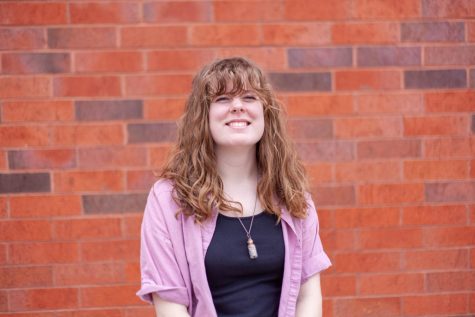
Lea Kopke is a fourth-year journalism and German student. This is her seventh semester on The Spectator staff. She plays the clarinet in the Blugold Marching Band and recently relearned how to ride a bike with no hands.

